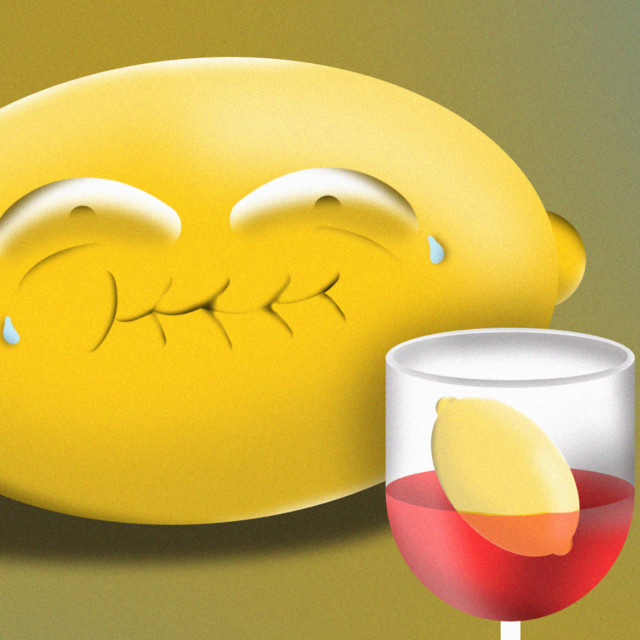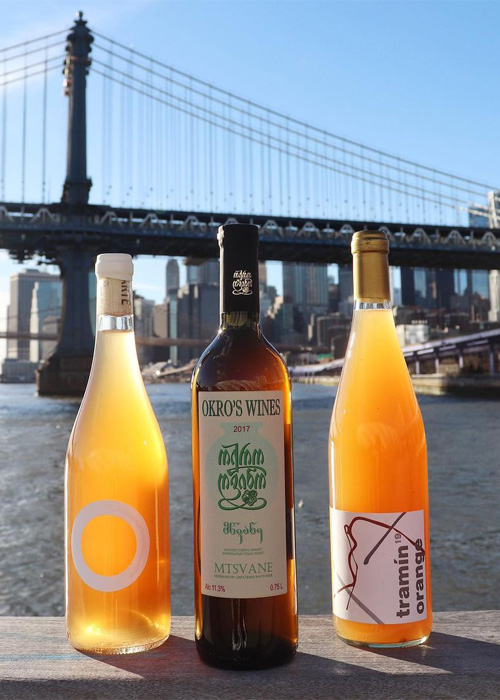It seems that everywhere you turn, there’s a sour. Sour beers, which have been floating around for several years, are continuing to see a light shined on them. And sour cocktails, like the New York Sour and Clover Club cocktail, have been making their way back to menus again, offering sippers a new twist on the beverages that whiskey, pisco, and amaretto made famous.
Wine drinkers, it seems, know exactly where to turn: wines that are more acidic and less fruit-forward than those that came before them. Natural wines, orange wines, new developments in hard cider and mead are all “sour-like” options for those seeking this flavor profile in other beverage arenas.
“A lot of my wine drinkers have started drinking mead,” says Toni Senecal, owner of Croton Tapsmith in Croton-On-Hudson, N.Y. But, in all that movement of the American palate, where will wine fall?
Acid Washed Isn’t Just for Jeans
“I truly feel that America has gone to acidity again,” says Brooke Sabel, sommelier for Gary’s Wine & Marketplace. “That acid is the key component to cocktails and wines.”
People are drinking other wines than Pinot Noirs and Cabernets, she says, adding that wines like Albariño, rosé, and Gamay have been trending higher on the list lately.
“People are looking at sugar content and alcohol content, but along the lines of sour beers and cocktails, there are also those people that are enjoying kombucha, which is really high-acid,” she says.
Let’s Get Funky
It seems that those who are trading in sours for other tipples have more of a penchant for heading toward a wine that has considerably more “funk.”
“The sour beer movement isn’t just about the sourness of the beer; it’s about the funkiness of the beer. So the natural wine movement is analogous for the wine industry,” says Josh Maloney, a Richland, Wash.-based winemaker and winemaking consultant. “They are using non-traditional types of yeast and are getting a lot of character besides ‘normal’ wine characters.”
He explains that to the uninitiated, whether one has been drinking wine for years or months, the flavor profiles in natural wines can be off-putting. However, for those who want to parallel their sips across the adult beverage arena with sour beers and cocktails, this is exactly what they are looking for in a wine.
But not everyone thinks it’s solely about natural wines. Sabel explains that there are still some people that say that natural isn’t necessarily “natural.” Natural wine carries controversy in the industry, as definitions of what can be classified as a natural wine have no definitive parameters besides the fact that nothing can be added to the batch. Instead, Sabel says, small-batch wines that carry higher acid, like Albariño and Chablis, will be the ticket for those looking for a more distinctive mouthful.
Orange Wine Is Still on the Way Up
While those in the wine industry know that orange wine isn’t as under-the-radar as it has been made out to be, it has found a home with mainstream sippers in the last two years. This wine, too, is a solution for those who want the big, bold mouthfeel of a red with the acidity of a white or cider.
“Generally speaking, there is a similar backstory behind orange wine,” says Maloney. “They’re getting a lot of attention and a lot of people are making them and developing them right now.”
Joe Wiens of Temecula, Calif.-based Wiens Family Cellars echoes this sentiment. “Certainly, more advanced beverage consumers will be more accepting of newer wine trends, like skin contact whites. There is a small segment in the natural wine scene that gets excited about overly ‘natty’ wines with high vinegar levels,” says Wiens, noting that he doesn’t see the vinegar trend sticking around for long.
Wine clubs, like Orange Glou, have been designed to highlight orange wine offerings of all types, and it’s become a mainstay on wine lists, like that at Southold, N.Y.-based North Fork Inn and Table; and in wine shops like Brooklyn-based The Owl’s Head.
“Orange wine has earned a permanent rank amongst wine lists,” says John Avelluto, sommelier and owner of The Owl’s Head. “This can be attributed to a few things, but I think many beverage directors and sommeliers think it’s delicious, and they are eager to show a new style to a more adventurous clientele.”
Bubbles Aren’t Excluded
“People are enjoying bubbles now more than ever,” says Sabel, adding that Franciacorta, Lambrusco, and American sparklers are top sellers. However, says Maloney, there is a subset of this wine segment that is perfect for those who enjoy that palate-pleasing feeling that sours give: low- and no-dosage sparkling wine.
While not a new trend, low- and no-dosage wines are the ideal categories for those looking for bubbles that provide some of the acidity and tartness you get from sour beers and cocktails.
“In some low- and no-dosage bubbles, there isn’t any sugar at all,” says Maloney. “They are very acidic. After you have a wine like that, you get this burn in your gut. And that kind of feels good!”
What’s Next for Winemaking?
Wiens says that the future of palate-challenging wines is a bit muddled. While he feels that those looking for unique wines with unique flavor notes will afford the industry a place for growth, the hard seltzer movement seemingly holds winemakers back from going too far down the path less traveled.
“The popularity of fruity hard seltzers is a testament to the human (and American) nature of wanting less palate-challenging drinks,” he says. “There will always be niche markets that grow and evolve, but much like the progression of International Bitterness Units (IBU)-chasing IPA producers, there will be a ceiling on the market of more ‘advanced’ beverage styles.”
Wiens has noticed that there has recently been more acceptance of lean and crisp white wines, brighter Italian varieties, and wines that are less fruit-driven in his tasting rooms. “We have embraced a lot of fun new wine styles, some of which easily fit into the sour trend,” he says.

